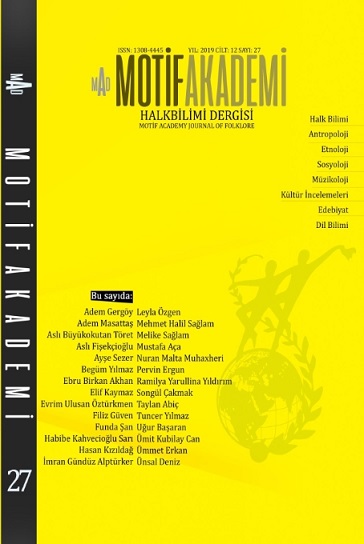“BAŞKA” HAYVAN BAŞKA DİL: BİLGE KARASU YAZININDA TEMSİL SORUNU
“OTHER” ANIMAL ANOTHER LANGUAGE: THE ISSUE OF REPRESENTATION IN BİLGE KARASU’S LITERATURE
Author(s): Adem GergöySubject(s): Fiction, Turkish Literature, Philosophy of Language, Theory of Literature, Ontology
Published by: Motif Halk Oyunları Eğitim ve Öğretim Vakfı
Keywords: Bilge Karasu; animal issue; ontology; poetics; representation;
Summary/Abstract: Bilge Karasu has a unique position in Turkish literature due to the forms of representation he developed for animals. In these texts, tools such as metaphor, symbol and allegory are seen as an issue due to their human-centered structure, and the ways of representation that can highlight the "otherness” of animals are sought. This article investigates the functioning of this literary language for animals based on Bilge Karasu's “Yengece Övgü” and Kılavuz texts. These texts are discussed in the light of the concepts that Jacques Derrida put forward in the framework of the “animal question.“ According to Derrida's new approach, language is central to the epistemology of ethical and political problems in the context of human-animal relationships. The main reason for this is that language is fed from the humananimal distinction and carries this distinction to the cultural ground. Thus, language opens the door to two complementary problems in the human-animal relationship: One cannot imagine animals as they are because of the reductive nature of language. This obstacle throws animals out of life and opens endless ways of exploitation against them. Representation tools such as metaphor, symbol and allegory form the scope of this problem in the literary field. So, is it possible to speak of a literary language that can represent animals in a non-metaphorical way? Karasu's interest in the representation of animals in the fictional text shapes certain aspects of its aesthetic organization such as language, narrative, fiction and readers. The study suggests that Karasu constructs animals on a ground that does not center human beings and tries to design an “exemplary reader” for this. Accordingly, animals have the opportunity to be represented in the fictional universe by means of techniques such as "metafiction ,” “irony." As a result, a face-to-face, direct encounter area is created between the animal and the reader.
Journal: Motif Akademi Halkbilimi Dergisi
- Issue Year: 12/2019
- Issue No: 27
- Page Range: 833-848
- Page Count: 16
- Language: Turkish

